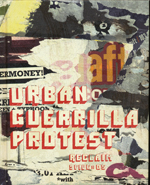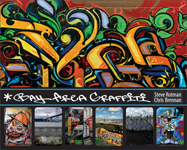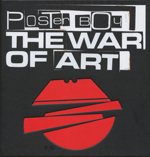Relatively ignored by those observing the vigorous grassroots insurgency and forced political change in Tunisia was the simultaneous widespread upheaval in neighboring Algeria. Waves of riots and demonstrations in both countries were stimulated by a recent rapid rise in food staple prices but, more importantly, were deeply rooted in long-standing revulsion against authoritarian rule, extensive official corruption and crippling unemployment. The rapid leaderless spread of insurgency throughout both countries was also apparently catalyzed by prolific and vivid YouTube, Facebook, blog and Twitter images and accounts. Both upheavals prompted government comments meant to marginalize protestors. More important was violent repression, with dozens of deaths and thousands of activists imprisoned in both countries.
Though rapid changes at the national regime level in Tunisia seem presently beyond possibility in Algeria, in fact the longer-range extent of grassroots insurgency in Algeria in recent times far exceeded that of its neighbor. Beyond continuing remnants of radical Islamist guerrilla activity by Al-Qaeda in the Maghreb and smaller groups, during 2010, there were over 112,000 reported instances of riots, demonstrations or other acts of public defiance resulting in police intervention throughout this country of 35 million people. (1) Using the same proportions, imagine the political significance of nearly 1,000,000 such events a year in the United States, most likely greatly exceeding the daily rate of grassroots confrontation at even the peak of 1960s urban, antiwar and campus activism.)
A common Algerian scenario in recent weeks and the past year was the blockade of major roads with burning tires, the sacking and sometimes burning of government buildings, banks, offices of companies and political parties, and stores catering to the wealthy minority tied to and benefitting from the tightly-run authoritarian regime.
Despite the real threat of arrests, imprisonment and torture, Algerian political scientist Rachid Tlemçani stated that such insurgency is the only means remaining for impoverished and alienated youth: “Riots are not only outbursts of rage or spontaneous reactions, they are a specific way to negotiate with those in power.”(2) Said Algerian journalist M. Saâdoune, those in the poor urban areas “are in a state of structural riot.”(3) Especially grueling are massive unemployment and desperate subsistence conditions for large numbers in the midst of an economy benefitting from unprecedented state income from huge gas and oil exports (producing by now over $150 billion in reserves). Grossly unequal distribution of wealth results in regime leaders and their patronage network buying lavish villas, fancy cars, expensive entertainment, private schooling and additional property abroad.
At the moment, aside from the government’s decision to lower the prices of basic foodstuffs, the current and past months’ waves of insurgency have brought little apparent political change in Algeria, especially frustrating when compared to results in Tunisia.
Several factors especially stand out to explain the different national responses, despite the shared economic despair and authoritarian regimes. Perhaps most significant is the recent traumatic Algerian experience of massive violence by the military and radical Islamists (including massacres secretly sponsored by the military to discredit such Islamists and justify tighter military rule). This struggle, most intense in the 1990s, came on the heels of a brief opening to liberal democratic experimentation. It resulted in terrorizing civilians caught between opposing forces, some 200,000 deaths and the wounding, torture and disappearance of many thousands more. The military regime, whatever its civilian face, has maintained a state of emergency from 1992 to the present, effectively banning any unauthorized political parties, organizations, demonstrations, meetings and media. Continually justified by officials as needed to prevent a return to 90s violence, the use of this rationale to maintain the power and privileges of Algeria’s rulers is lost to no one. Yet remaining substantial civilian fear of vulnerability to radical Islamist (and military) violence is well based in the trauma of that deadly decade.
In actuality, while the Islamist FIS party (on the verge of gaining power in 1992 before the election cancellation and declaration of martial law) remains banned, political Islamism is still seen as a latent potentially mobilizable massive political force and thus a source of genuine concern among those in the opposition of secular parties, autonomous trade unions, women’s groups and human rights activists. Given the continuing deep alienation of young people and others because of dictatorship, widespread poverty and huge disparity in wealth, political Islamism’s ability to gain significant street support still remains. (In the present wave of demonstrations, ex-FIS leader Ali Benhadj was turned away by police when he apparently sought to further inflame and co-opt the spontaneous movement in Algiers.(4)
Three other factors especially stand out: the respective roles of the military, the spectre of regionalist autonomy and the nature of each country’s largest trade unions. In Tunisia, however important the military in maintaining president Ben Ali’s dictatorship, he himself and his political entourage were perceived as the primary targets by regime opponents. In Algeria, while president Bouteflika is despised by many and supported by few, it is widely understood that the military is the controlling force in the regime–as it has been since independence in 1962, after years of bloody struggle against the French. Bouteflika was chosen by the military in 1999 as the lesser of evils among potential civilian faces of the regime and would be readily abandoned if a new acceptable civilian figure could be found.
Algeria, as opposed to Tunisia, also has a factor of politically divisive regionalism that serves to prevent or inhibit a more effective national opposition. Established political parties (the FFS and RCD) based among Berber speakers in the population (especially in the Kabylian region east of Algiers, and in the capital and workforce abroad) draw substantially less support from other areas of the country. Even the impressively massive grassroots decentralist insurgency in Kabylia nearly ten years ago (the assemblies or aârch movement) failed to spread elsewhere in Algeria despite the strong resonance of its anti-government and overall anti-authoritarian orientation and goals. Additionally, the rise of a new Kabylian regional autonomy movement in the past decade (the MAK), however much opposed by many in that region, has revived suspicions among some Algerians elsewhere against apparent Kabylian threats to national unity. A third important difference between Algeria and Tunisian political contexts is the submission of the large national trade union (UGTA) to the regime in the former and the relative independence of its counterpart (UGTT) in the latter. Developing powerful general strike actions anytime soon, as in Tunisia, are thus inconceivable in Algeria.
At present, though far from initiating or joining the Algerian insurgency (as opposed to their counterparts in Tunisia), most journalists and spokespeople among the political opposition expressed only verbal support for both immediate objectives (foodstuff price relief) and deeper anti-regime critiques expressed by those directly confronting the government at the grassroots.
Writing in the daily journal, El Watan, for example, Ali Bahmane warned that if the Algerian government fails to move toward radical reform, it risks “seeing a new round of riots. The cycle will end only with the installation of a genuine democracy, but with a heavy cost–riots are traumatizing and always costly in human lives and property destruction.”(5) A commentator for independent Radio Kalima noted that “though the country is experiencing a very grave political crisis, the sole response of the leaders is repressive.” Like Pinochet, Ceaucescou, Salazar and Marcos, this blind regime that blocks all free expression, pillages the country’s riches, and mistreats its people “is doomed to disappear!” And those marginalized, “worthless” and delinquent youth despised by the regime “will throw [the latter] definitively into the dustbins of history.”(6)
For the Kabylian-based RCD party, the riots “are a direct result of a political autism that has always distorted the will of citizens by electoral fraud prior to diverting the national wealth” and “condemns with the most extreme vigor the [police] raids on these youths who are first of all political victims of a system that has imposed itself for a half-century by frauds, corruption, censorship and abuse of authority; so much violence has devastated the Algerian people.”(7) In turn, the rival FFS stated that “Algerians know that it is difficult to lead a peaceful struggle in the face of a violent regime. They show that they are still determined to finish up this struggle, to bring the downfall of the regime and to endure every sacrifice. . . . Would the Algerian equation still be limited to the simplistic binary couple, Bouteflika or the Taliban?”(8)
In the present context, dissident former Algerian military officers have also denounced the current regime and demanded major change. On January 6th, the Algerian Free Officers Movement (MAOL) issued a statement warning of chaos and tightened military rule if the voices of young protestors are not heard. “The truth is that these tumultuous youth represent Algeria in its most genuine state and express (with the means available to them) their frustration and their thirst for freedom, dignity and independence with all that that word can mean.” The MAOL called on professional military ranks to support a democratic system respectful of human rights.(9) Meanwhile, ex-officer Habib Souaidia, author of The Dirty War (a stark discussion of military repression, torture and manipulation of Islamist guerrillas in the 90s), critiqued the “false opposition that speaks in our name, these dishonest journalists and intellectuals” who fail to vigorously contest the political terms of the regime. While “everyone predicted a rebellion, no one knew how to transform it into revolution.” “The Algerian opposition needs new faces so to emerge again from the ashes. We need a new generation of politicians, intrepid and courageous, firm and supple, rigorous and effective and, especially, disinterested in personal gain and patriotic.(10)
At the same time, several of the most active opposition organizations, the human rights league (LADDH) and four autonomous trade unions (independent from the UGTA) organized an emergency meeting on January 21st, including the FFS and RCD parties and other organizations, to analyze the current social catastrophe and coordinate efforts to support and give content to the insurgency of the youth. The meeting created a new National Coordination of Cooperation for Democratic Change and announced plans for a large joint march on February 9th to demand an end to the state of emergency. (Though one day later, the FFS withdrew support for the march.) Meanwhile, the RCD party’s own attempt at a peaceful protest march in the streets of Algiers on January 22nd was declared illegal and violently repressed by the police. Nevertheless, if civil organizations and parties begin to take joint direct action, as in Tunisia, instead of mere words of support, a deeper change dynamic could be set in motion over the next few days and weeks ahead.
The factors differentiating Tunisian and Algerian potentials for change are significant. Yet even the Tunisian experience to date demonstrates the great difficulty in accomplishing radical transformation in such contexts. It is one thing, however courageous and important, to force the exile of a dictator, his immediate family and even his closest political entourage. It is another to actually remove from power the entrenched forces of authoritarian, privileged rule in the military, the bureaucracy and the elite political class. (Tanks returned to the streets after Ben Ali left the country and the post-Ali regime sought to preserve the most powerful ministries for Ben Ali allies.).
Achieving at best a new “democracy” regime will provide a welcome breathing space after years of oppression but will predictably result in further economic and political oppression if “democracy” is not decentralized to the level of genuine and decisive decision-making at the grassroots. As Tunisians and Algerians both currently experience, there are very powerful forces that stand in the way. Former Algerian prime minister Redha Malek stated recently that an Algerian military retreat from power would currently “risk anarchy.”(11) But a genuine decentralist national confederation of the sort partially prefigured by the original Kabylian assemblies movement would potentially serve Algerians far better than political reforms mainly benefitting civilian elites.
David Porter researched and wrote on the large workers’ self-management experience in Algeria almost fifty years ago. He is a political science emeritus professor at SUNY/Empire State College where he taught numerous courses including modern Algerian history. He is the editor of Vision on Fire: Emma Goldman on the Spanish Revolution (rev. ed., AK Press, 2006) and will publish a book with AK Press this year concerning French anarchist perspectives on Algeria from 1954 to the present. He can be contacted at david.porter@esc.edu.
1. Adiène Meddi, “Edito: Rien ne va plus,”
El Watan (Algiers), 1/7/11.
2. Rachid Tlemçani, “La fin de règne serait plus terrible que prévue par les scénarios maison,”
DNA: Dernières Nouvelles d’Algérie, 1/6/11 (posted at the algeria-watch.org web site).
3. M. Saâdoune, “Même en Algérie, l’émeute n’est pas ‘banale’,”
Le Quotidien d’Oran (Oran), 1/6/11.
4. Neîla B., “Ali Benhadj en liberté provisoire,”
Liberté (Algiers), 1/20/11.
5. Ali Bahmane, “Les leçons d’une crise,”
El Watan, 1/12/11.
6. Yahia Bounouar, “Algérie: La chasse aux jeunes est lancée. Un jour, bientôt, ils vous chasseront!”
Radio Kalima, 1/10/11.
7. Yazid Slimani, “Tunisie et Algérie: Une protestation de rue, deux mouvements très different,”
TSA (Tout sur l’Algérie) web page, 1/12/11; Djamel Khiat, “Des centaines de manifestants en instance de jugement, leurs familles réclament leur libérations,”
DNA, 1/9/11.
8. FFS Déclaration, “Aujourd’hui la Tunisie — Demain le Maghreb,” 1/12/11 (posted at the algeria-watch.org web site).
9. “Mouvement Algérien des Officiers Libres,” 1/6/11 declaration (posted on the algeria-watch.org web site).
10. Habib Souaidia, “Que faut-il faire maintenant?”
Algeria-Watch web site, 1/13/11.
11. Fayçal Métaoui, “Le diagnostic de Redha Malek sur l’état du pays: Bouteflika, l’armée et la transition,”
El Watan, 10/3/10.
From: Z Net – The Spirit Of Resistance Lives
URL: http://www.zcommunications.org/algeria-and-tunisia-separate-paths-of-insurgency-by-david-porter












